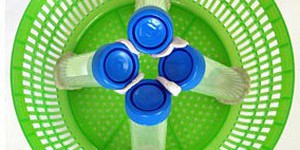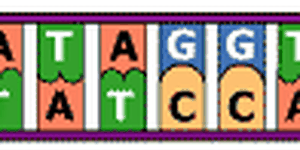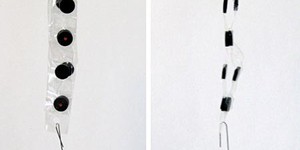Elementary School, Biotechnology Science Projects (12 results)
Yogurt, biofuel, biodegradable plastics, and antibiotics are all examples of products based on biotechnology research and manufacturing techniques. What else will we be able to create as we use biotechnology in new ways?
|
Select a resource
Coding Projects
Sort by
|
Sometimes science can be really messy or use pretty disgusting ingredients. That is what it takes to understand how the world works, even if the experiment isn't pretty. Do you like chemical reactions that stink and ooze foamy bubbles? Do you think it sounds fun to make a super gross liver smoothie? Then this is the experiment for you!
Read more
All living things have DNA inside their cells. How do scientists extract the DNA from cells in order to study it? In this science experiment you can make your own DNA extraction kit from household chemicals and use it to extract DNA from strawberries.
Read more
New
Can AI understand human language? In the future, AI could aid in emergency interpretive service in the hospital when translators aren't available. But can current AI algorithms understand non-verbal languages like sign language? In this science project, you will test whether AI can learn sign language gestures or phrases to see if it can be used for interpretation.
Read more
In this project, you'll learn how to isolate DNA from onion cells, separating it from other cellular components in a manner that still preserves its structure and sequence. In the end, you'll have enough DNA to see with the unaided eye, and you'll be able to spool it to demonstrate its strand-like structure.
Read more
Do you know why enzymes are oftentimes called the workhorses of biochemistry? It's because they can speed up a wide variety of chemical reactions, and chemists and biologists use enzymes to do all kinds of jobs. In this project, pectinase, an enzyme frequently used in the food industry, will be used to extract juice from apples.
Read more
How much iron is in your cereal? In this experiment, you will devise a way of testing foods for supplemental iron additives. Then you will use your design to test different breakfast cereals to see how much iron they contain. Which brand of cereal will have the most iron in it?
Read more
New
Are you ever annoyed by a poor Wi-Fi signal? What about when you try to send a text message, and it just won't go through because of poor cell service? Have you ever wondered what factors affect the strength of your signal and the speed of the connection? If so, this project is for you!
Read more
Microfluidic devices are small tools used in different fields like engineering and biomedicine. Scientists and engineers use these devices to work with very tiny amounts of fluids for various experiments. These experiments can include things like biomedical research, creating new medicines, and even applications in the car industry. In this project, you will create and test your own microfluidic device design and compare it to other designs.
Read more
Ever used a pair of molecular scissors? Restriction enzymes are molecular scissors that cut DNA into pieces. Find out which enzymes will cut, and where by making a restriction map. Then you can figure out what will happen if you change the sequence of the DNA. Will the same enzymes still cut the new DNA sequence?
Read more
It is fun to shake up a snow globe and watch the "snow" slowly fall. You can imagine that if the snow fell down very quickly it would be disappointing. But there are times when scientists in a laboratory want this to happen. Scientists use samples that have liquid mixed with small, solid pieces (like the inside of a snow globe), and they need all of the solid pieces in a clump, separated from the liquid. Instead of waiting for the pieces to slowly fall out of the liquid, scientists speed up…
Read more
Do you like solving mysteries? In this experiment, you can find out how a DNA fingerprint can help you figure out whodunit. The answer might just be in the "sequence" of events!
Read more
How do scientists "copy" DNA? They use a process called the Polymerase Chain Reaction, or PCR. The key to making this process work is having a short piece of DNA, called a primer, that will stick to the larger piece of DNA you want to copy, called a template. In this science project, you will test how the number of matches and mismatches in a primer will affect its ability to stick, or anneal, to the DNA template during PCR.
Read more
|
















